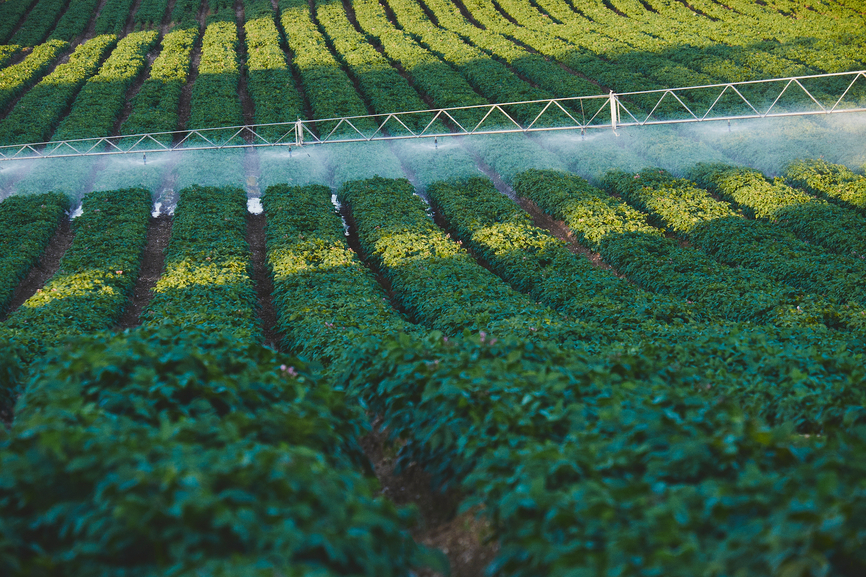The industrial approach to acquiring food, water, timber, fiber, and fuel over the past half-century has polluted or overexploited two-thirds of the ecological systems on which life depends. Furthermore, we have reduced both species and genetic diversity, which has dramatically reduced the resilience of ecosystems.
For the last 50 years, industrial agriculture has been built with a set of core assumptions that created a successful production growth as well as earned it the first place as a major water polluter. To understand and attempt to remedy agriculture’s effect on water, we must dive into those core assumptions, the role of water in civilization, and the major water pollutants at play in agriculture.
First, let’s take a look at the six assumptions that built industrial agriculture:
- Production efficiencies can best be achieved through specialization, simplification, and concentration.
- Technological innovation is able to overcome all production challenges.
- Control management is effective.
- Natural resource depletion can always be overcome, and sinks in nature would always be adequate to absorb the wastes.
- Therapeutic intervention is the most effective strategy for controlling undesirable events.
- Cheap energy would always be available.
In the twenty-first century, all of these assumptions are being challenged. Oil, natural gas, and irrigation water, which provide most of the inputs for the continued success of industrial agriculture are being depleted. With the six assumptions being rendered obsolete, today we face a serious dilemma when it comes to water pollution.
Historically, this has proven to cripple or even bring down entire civilizations. The ancient Sumerian cities of the Fertile Crescent drew water from the Tigris and Euphrates Rivers to feed the largest populations the planet had seen until that point. Over time, however, these irrigation systems led to a buildup of salt in the soil of the low-lying areas around the rivers, greatly limiting what would grow there. Although attempts were made to switch to more saline-resistant crops, the reduced productivity led to a population decline and eventually the destruction of the civilization by external and internal forces. Irrigation, the technique that allowed the world’s first civilization to emerge, led to its downfall.
In the present day, water pollution from unsustainable agricultural practices poses a serious risk to human health and the planet’s ecosystems, a problem often underestimated by policymakers and farmers alike.
Major water pollutants come in many different forms but can be broken down into seven major categories:
- Nutrients: Primarily nitrogen and phosphorus present in chemical and organic fertilizers as well as animal excreta and normally found in water as nitrate, ammonia, or phosphate.
- Pesticides: Herbicides, insecticides, fungicides, and bactericides, including organophosphates, carbamates, pyrethroids, organochlorine pesticides, and others. Many, such as DDT, are banned in most countries but are still being used illegally and persistently.
- Salts: Ions of sodium, chloride, potassium, magnesium, sulfate, calcium, and bicarbonate. These are measured in water, either directly as total dissolved solids or indirectly as electric conductivity.
- Sediment: Measured in water as total suspended solids or nephelometric turbidity units – especially from pond drainage during harvesting.
- Organic matter: Chemical or biochemical oxygen-demanding substances (e.g. organic materials such as plant matter and livestock excreta), which use up dissolved oxygen in water when they degrade.
- Pathogens: Bacteria and pathogen indications such as Escherichia coli, total coliforms, fecal coliforms, and enterococci.
- Metals: Selenium, lead, copper, mercury, arsenic, and manganese.
- Emerging pollutants: Drug residues, hormones, and feed additives.
The occurrence of a wide range of emerging pollutants in wastewater used for irrigation presents not only potentially-serious risks to human health and food safety through contaminated crops, but also spreads these pollutants to the aquatic environment and soil. On top of that, the environmental and social annual costs of water pollution caused by agriculture probably exceed billions of dollars. The costs of agricultural pollution are generally non-market externalities, which are borne by society as a whole.
It is crucial we take action today in order to remedy our effect on water before it is too late.
